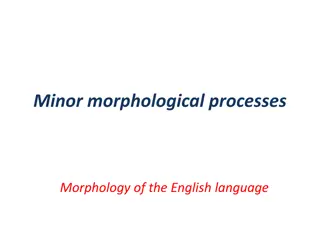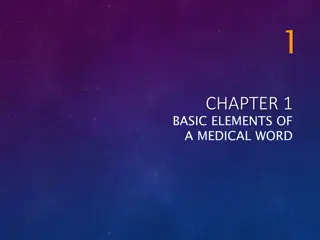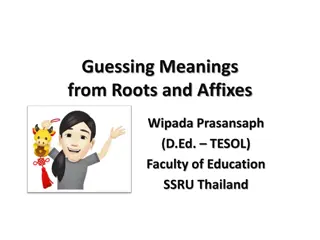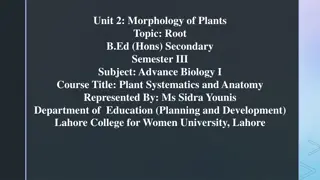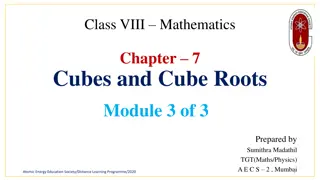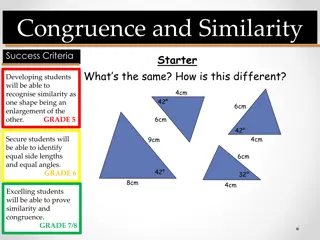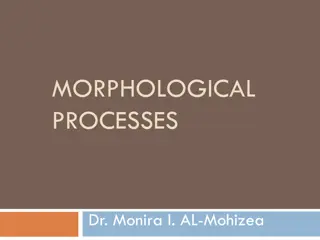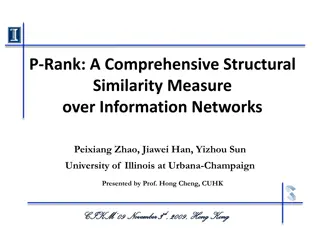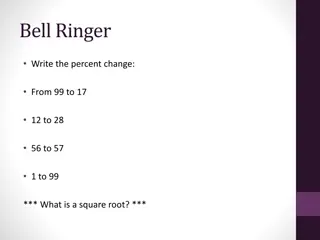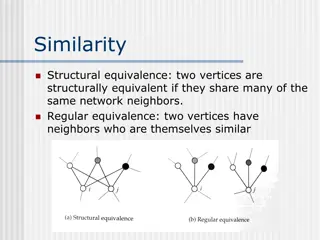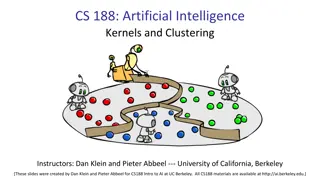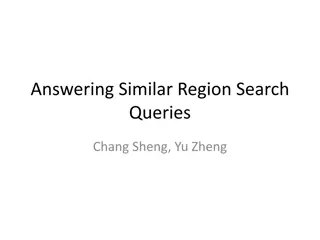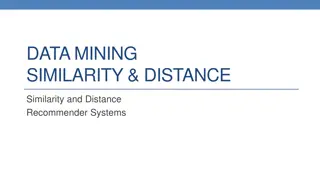Morphological Similarity and Stemming: Understanding Word Roots
In the area of Natural Language Processing (NLP), understanding morphological similarity and stemming is crucial. Stemming involves reducing words to their base form by removing suffixes and performing transformations. Examples and methods like Porter's Stemming Algorithm highlight how words with the same root can be processed efficiently. The concept of measure in Porter's Algorithm provides insights into syllables within words. Explore transformation patterns and examples that showcase the practical application of these linguistic principles in text processing.
Download Presentation

Please find below an Image/Link to download the presentation.
The content on the website is provided AS IS for your information and personal use only. It may not be sold, licensed, or shared on other websites without obtaining consent from the author.If you encounter any issues during the download, it is possible that the publisher has removed the file from their server.
You are allowed to download the files provided on this website for personal or commercial use, subject to the condition that they are used lawfully. All files are the property of their respective owners.
The content on the website is provided AS IS for your information and personal use only. It may not be sold, licensed, or shared on other websites without obtaining consent from the author.
E N D
Presentation Transcript
Text Similarity Morphological Similarity: Stemming
Morphological Similarity Words with the same root: scan (base form) scans, scanned, scanning (inflected forms) scanner (derived forms, suffixes) rescan (derived forms, prefixes) rescanned (combinations)
Stemming Definition To stem a word is to reduce it to a base form, called the stem, after removing various suffixes and endings and, sometimes, performing some additional transformations Examples scanned scan indication indicate Note In practice, prefixes are sometimes preserved, so rescan will not be stemmed to scan
Porters Stemming Method History: Porter s stemming method is a rule-based algorithm introduced by Martin Porter in 1980 The paper ( An algorithm for suffix stripping ) has been cited more than 7,000 times according to Google Scholar Input: The input is an individual word. The word is then transformed in a series of steps to its stem Accuracy: The method is not always accurate
Porters Algorithm Example 1: Input = computational Output = comput Example 2: Input = computer Output = comput The two input words end up stemmed the same way
Porters Algorithm The measure of a word is an indication of the number of syllables in it Each sequence of consonants is denoted by C Each sequence of vowels is denoted as V The initial C and the final V are optional So, each word is represented as [C]VCVC ... [V], or [C](VC){m}[V], where m is its measure
Examples of Measures m=0: I, AAA, CNN, TO, GLEE m=1: OR, EAST, BRICK, STREET, DOGMA m=2: OPAL, EASTERN, DOGMAS m=3: EASTERNMOST, DOGMATIC
Porters Algorithm Transformation patterns The initial word is then checked against a sequence of transformation patterns, in order. Example (m>0) ATION -> ATE medication -> medicate Note that this pattern matches medication and dedication, but not nation. Actions Whenever a pattern matches, the word is transformed and the algorithm restarts from the beginning of the list of patterns with the transformed word. If no pattern matches, the algorithm stops and outputs the most recently transformed version of the word.
Example Rules Step 1a SSES -> SS presses -> press IES -> I lies -> li SS -> SS press -> press S -> lots -> lot Step 1b (m>0) EED -> EE refereed -> referee (doesn t apply to bleed since m( BL )=0)
Example Rules Step 2 (m>0) ATIONAL -> ATE inflational (m>0) TIONAL -> TION notional -> notion (m>0) IZER -> IZE nebulizer -> nebulize (m>0) ENTLI -> ENT intelligentli (m>0) OUSLI -> OUS analogousli (m>0) IZATION -> IZE realization -> realize (m>0) ATION -> ATE predication -> predicate (m>0) ATOR -> ATE indicator -> indicate (m>0) IVENESS -> IVE attentiveness -> attentive (m>0) ALITI -> AL realiti (m>0) BILITI -> BLE abiliti -> inflate -> intelligent -> analogous -> real -> able
Example Rules Step 3 (m>0) ICATE -> IC replicate -> replic (m>0) ATIVE -> informative -> inform (m>0) ALIZE -> AL realize -> real (m>0) ICAL -> IC electrical -> electric (m>0) FUL -> blissful -> bliss (m>0) NESS -> tightness -> tight Step 4 (m>1) AL -> appraisal -> apprais (m>1) ANCE -> conductance -> conduct (m>1) ER -> container -> contain (m>1) IC -> electric -> electr (m>1) ABLE -> countable -> count (m>1) IBLE -> irresistible -> irresist (m>1) EMENT -> displacement -> displac (m>1) MENT -> investment -> invest (m>1) ENT -> respondent -> respond
Examples Example 1: Input = computational Step 2: replace ational with ate: computate Step 4: replace ate with : comput Output = comput Example 2: Input = computer Step 4: replace er with : comput Output = comput The two input words end up stemmed the same way
External Pointers Online demo http://text-processing.com/demo/stem/ Martin Porter s official site http://tartarus.org/martin/PorterStemmer/
Quiz How will the Porter stemmer stem these words? construction ? increasing ? unexplained ? differentiable ? Check the Porter paper (or the code for the stemmer) in order to answer these questions. Is the output what you expected? If not, explain why.
Answers to the Quiz construction ? increasing ? unexplained ? differentiable ? construction construct increasing increas unexplained unexplain differentiable differenti
NACLO Problem Thorny Stems, NACLO 2008 problem by Eric Breck http://www.nacloweb.org/resources/problems/2008/N200 8-H.pdf
Solution to the NACLO problem Thorny Stems http://www.nacloweb.org/resources/problems/2008/N2008- HS.pdf




